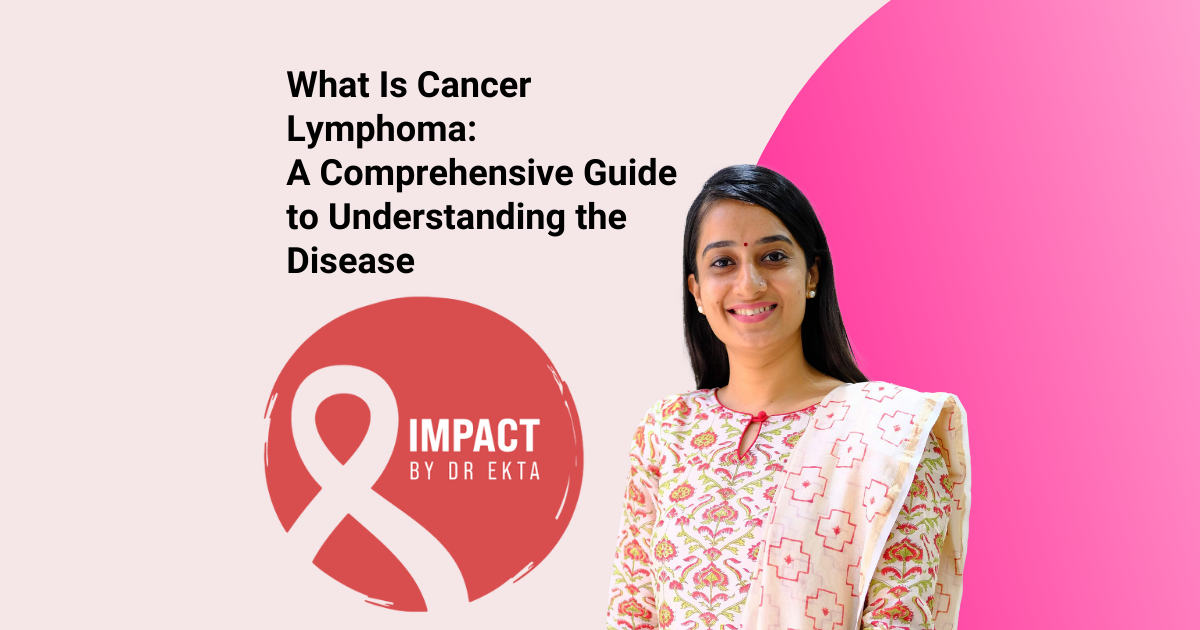As an oncologist, one of the most common questions I hear from patients is, “What is cancer lymphoma?” It’s a question that deserves a clear and thorough explanation, especially considering how overwhelming a cancer diagnosis can be. Lymphoma is a type of cancer that affects the lymphatic system, a vital part of our immune system. In this blog, I aim to break down what lymphoma is, the different types of lymphoma, how it is diagnosed, and the treatment options available. I hope that this guide will help you understand lymphoma better and empower you to navigate this challenging journey.
What Is Cancer Lymphoma?
Lymphoma is a type of cancer that begins in the lymphocytes, a subtype of white blood cells. Lymphocytes play a crucial role in the body’s immune response, fighting off infections and foreign invaders. These cells are primarily found in the lymphatic system, which includes lymph nodes, the spleen, thymus, and bone marrow. When lymphocytes grow uncontrollably, they form tumors that can spread throughout the body, leading to lymphoma.
There are two main types of lymphoma: Hodgkin lymphoma and non-Hodgkin lymphoma. Each type has its unique characteristics, and understanding the difference is important for both diagnosis and treatment.
Hodgkin Lymphoma
Hodgkin lymphoma is a rare form of lymphoma, but it is one of the most treatable types of cancer. It is characterized by the presence of a specific type of cancer cell called the Reed-Sternberg cell, which is not found in non-Hodgkin lymphoma. Hodgkin lymphoma generally affects younger adults but can occur at any age. Patients often experience swollen lymph nodes, typically in the neck, underarms, or groin, but they might not experience pain. In some cases, symptoms may include fever, night sweats, and unexplained weight loss.
Non-Hodgkin Lymphoma
Non-Hodgkin lymphoma (NHL) is much more common and encompasses a broad range of lymphomas. It can occur at any age, but the risk increases as people get older. NHL is classified based on whether the cancer originates in B cells or T cells, both of which are types of lymphocytes.
B-cell lymphoma: The most common type of NHL, with diffuse large B-cell lymphoma (DLBCL) being the most prevalent subtype.
T-cell lymphoma: Less common than B-cell lymphoma but still significant, with several subtypes affecting different parts of the body.
Unlike Hodgkin lymphoma, NHL can appear in various organs other than the lymph nodes, including the stomach, intestines, or skin.
Signs and Symptoms of Lymphoma
Now that we’ve explored the basics of what cancer lymphoma is, let’s look at the common signs and symptoms. The symptoms can vary depending on the type of lymphoma, its location, and how advanced it is. However, some general symptoms include:
Swollen lymph nodes: Typically painless, these may occur in the neck, armpit, or groin.
Fever: Persistent or recurrent fevers without any clear cause may be a symptom of lymphoma.
Night sweats: Profuse sweating, especially at night, is common in both Hodgkin and non-Hodgkin lymphoma.
Unexplained weight loss: Losing a significant amount of weight over a short period can be a warning sign.
Fatigue: Extreme tiredness that doesn’t improve with rest.
Itching: This may occur with or without a rash, particularly in Hodgkin lymphoma.
Abdominal pain or swelling: In cases where lymphoma affects the abdominal area.
Diagnosis: How Do We Identify Lymphoma?
When a patient presents with symptoms suggestive of lymphoma, the next step is diagnostic testing. A thorough evaluation is crucial to determine the specific type of lymphoma, its stage, and how aggressively it is progressing. Some of the key diagnostic tools we use include:
Physical Examination: I start by examining the patient for swollen lymph nodes and other symptoms.
Blood Tests: These can provide insight into how well the organs are functioning and if the cancer has affected the blood cells.
Imaging Tests: Scans such as CT, MRI, or PET are often used to get a clearer picture of the lymph nodes and other organs.
Biopsy: A lymph node biopsy is usually necessary for an accurate diagnosis. It involves taking a small sample of lymph node tissue and examining it under a microscope for cancer cells.
Bone Marrow Biopsy: In some cases, a bone marrow biopsy may be needed to determine if the lymphoma has spread to the bone marrow.
Staging Lymphoma
Once lymphoma is diagnosed, we use staging to determine how far the cancer has spread within the body. Staging helps in deciding the best treatment approach. Lymphoma is generally staged from I to IV, with Stage I being localized to a single lymph node region and Stage IV indicating widespread involvement of the lymphatic system and other organs.
Treatment Options: How Do We Treat Lymphoma?
When people ask me, “What is cancer lymphoma?” they often follow up with questions about treatment. The good news is that lymphoma is often treatable, especially when detected early. The treatment plan depends on the type of lymphoma, its stage, and the patient’s overall health. Here are the most common treatments:
Chemotherapy: Chemotherapy is the primary treatment for most types of lymphoma. It involves using drugs that kill cancer cells or stop them from growing. Some patients may need a combination of chemotherapy drugs, known as CHOP or ABVD, depending on the type of lymphoma.
Radiation Therapy: Radiation is often used in localized cases of lymphoma, especially Hodgkin lymphoma. It targets specific areas of the body to kill cancer cells.
Immunotherapy: Immunotherapy works by boosting the body’s immune system to recognize and attack cancer cells. Drugs like rituximab are commonly used in treating B-cell lymphomas.
Targeted Therapy: These therapies focus on specific molecules within cancer cells. They work by blocking the growth and spread of cancer while minimizing damage to healthy cells.
Stem Cell Transplant: In some cases, a stem cell transplant may be recommended, particularly if the lymphoma is aggressive or has relapsed. This procedure allows doctors to use high doses of chemotherapy or radiation to kill more cancer cells, followed by the infusion of healthy stem cells to regenerate the patient’s immune system.
Prognosis: What Can You Expect?
The prognosis for lymphoma patients varies depending on the type and stage of the disease. Early-stage Hodgkin lymphoma has a high cure rate, and many people go on to live long, healthy lives after treatment. Non-Hodgkin lymphoma has a more varied prognosis, but advances in treatment have significantly improved outcomes for many patients.
The Importance of Follow-Up Care
Once treatment is completed, follow-up care is critical. Lymphoma patients need regular check-ups, blood tests, and sometimes imaging scans to monitor for recurrence or late effects of treatment. As an oncologist, I emphasize the importance of ongoing communication and support. The journey doesn’t end when treatment concludes, and being vigilant about long-term health is essential.
Conclusion
In answering the question, “What is cancer lymphoma?” it’s clear that this is a complex and varied disease, but one that is often treatable with the right approach. Whether you’re a patient, family member, or someone interested in learning more, understanding lymphoma is the first step in fighting it. Early detection, personalized treatment, and ongoing care are key to improving outcomes and offering hope to those affected by this disease. My goal as an oncologist is to provide my patients with the knowledge and support they need to face lymphoma with confidence.

